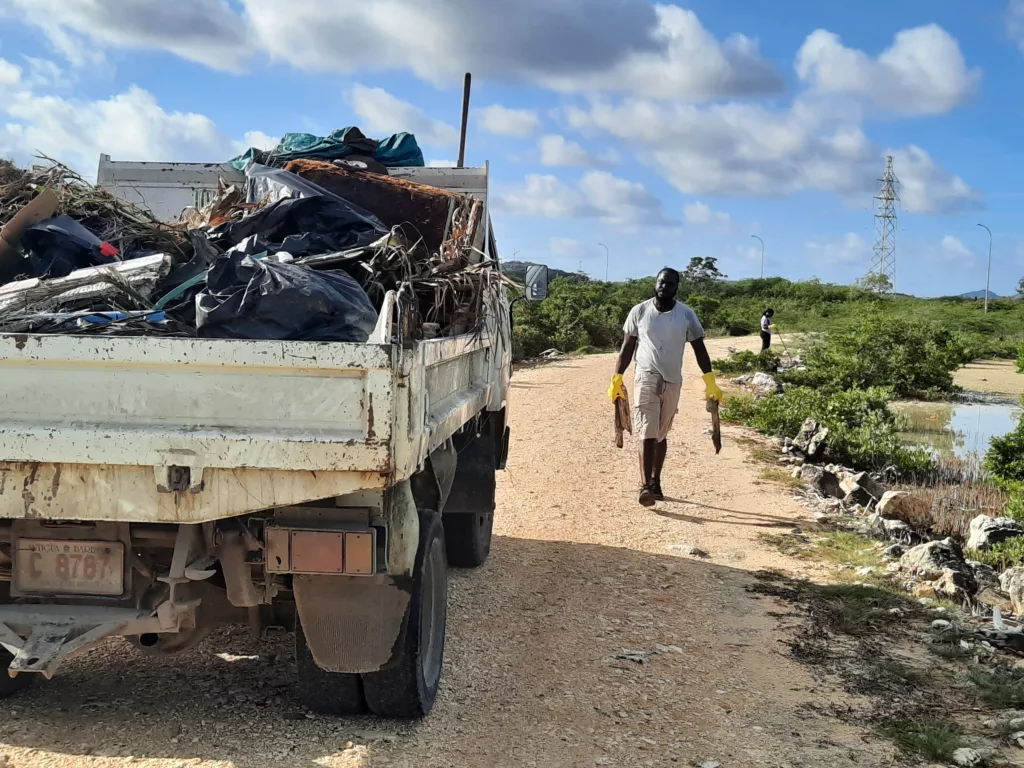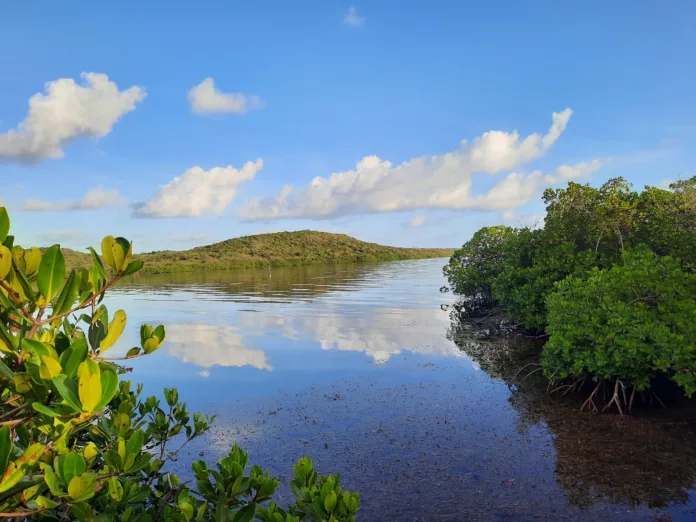
By Natalya Lawrence
On a sunny afternoon earlier this year, a small group of Parham Community members visited Byam’s Wharf, an unassuming wetland between Fitches Creek and Parham Town. Half of the group openly acknowledged that, though Parhamites from birth, they knew very little about the wetland that formed the backyard of their community. The other half of the group gleefully recounted past escapades of cricket, in the drier areas, a safe and fun past-time. They also excitedly described more daring adventures, such as mud soccer in the swampy areas, requiring a well-thought out cleanup plan before they dared pass a toe across their parents’ threshold!

Why was a visit important? The site is strongly linked to the community and is globally recognised as both a Key Biodiversity Area and an Important Bird and Biodiversity Area. In other words, it provides a means for people to relax and enjoy nature through walking, observing wildlife, fishing, kayaking, just to name a few activities. Additionally, it is an astonishing playground for nature enthusiasts and scientists, who can observe and study key species such as all the mangrove species found in the country, migrant and resident birds, a vast array of insects, and the list goes on.
Yet, despite all of this, wetlands across the country are misunderstood and misused. Wetlands get a bad reputation as being stinky, useless plots of land which should be backfilled and developed. Sadly, wetlands across the island often serve as illegal dumpsites. Byam’s Wharf has not been spared that fate, and, at times, is among the worst illegal dumpsites to be found. Almost anything imaginable can be seen there including old tyres, discarded hotel slippers, fridges, washing machines, stoves, barrels, windows, tiles, election paraphernalia, television sets, discarded building material, dead dogs, cows and horses.
This is where the Parham Alliance Beautification and Revitalization Organization (PABRO) has taken yet another step to restore Parham Town and its surroundings, in this instance focusing on the natural environment. Under the project entitled “Creating a Foundation for Community-Led Conservation Action in Parham Town”, the group is working to eliminate the severe contrast of having an illegal dumpsite in a key green area, of having to work through tons of garbage to score some of the most naturally picturesque vistas on island, of putting people at risk who visit to study ecosystems, observe nature, fish and other low impact activities.

The project is funded by the Global Environment Facility Small Grants Programme – UNDP, and supported by the landowner, government stakeholders and community members. While the project team works with the National Solid Waste Management Authority to undertake regular cleanups, the team also hopes to effect behaviour change by educating the people on the value of wetlands.
Byam’s Wharf is a key part of the Parham community, embedding itself in the fabric of the town’s history, its people’s traditions and way of life. In addition to the strong cultural link, many are the ecosystem services that this and other wetlands provide. These include carbon sequestration, coastline buffering (from wind and wave energy) and reduction of shoreline erosion during severe storms, flood water absorption (supporting communities further away), water quality improvement through filtration of runoff, habitat creation for terrestrial and aquatic species, creation of nursery for small fish, provision of recreational site for residents and visitors, provision of natural products as varied as key ingredients for medicine, to mangrove honey, touted as being among the tastiest of honeys.
At Byam’s wharf, it is not uncommon to happen upon recreational fishers, groups of travelling birdwatchers — or students from as young as elementary to ones pursuing advanced degrees — among the trash and among the mangroves. PABRO is taking a small step to restore a vital ecosystem for the benefit of people, and wildlife.
Key to their success is support from landowners, the community and government stakeholders. We hope the example set by this team will lead to redoubling of efforts for sustainable use of the site and scaling up and replication of this team’s efforts to additional sites across the country.
After enjoying an afternoon excursion in Byam’s Wharf wetland, as dusk creeps in one is gently ushered out against a backdrop of a cacophony of repetitive squawks from roosting birds. The choir strikes up each evening, marking the end of another day. We hope that with a change in behaviour amongst our people, this site will persist, and the chorus of the roosting birds will be enjoyed for generations to come.


